How to grow sakura bonsai?
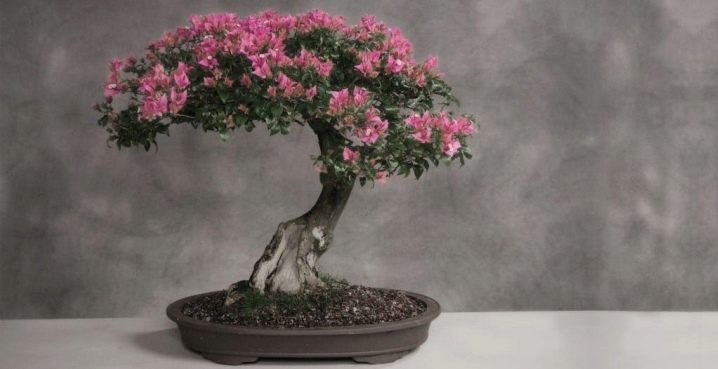
Sakura bonsai tree is a miniature copy of a real tree. Relatively speaking, this is a houseplant, which is sometimes called a dwarf plant. Growing sakura bonsai requires patience as the process can take up to 7 yearsHowever, during flowering, a neat decorative sakura will fill the house with freshness and beauty, and will allow the grower to fully enjoy the result of his painstaking work.
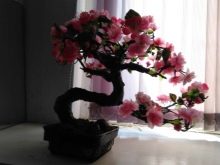
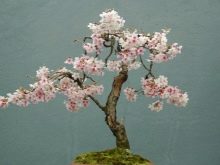
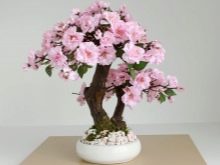
What it is?
Bonsai art appeared in China over two thousand years ago. Bonsai later became popular in Japan in an updated form. The art of bonsai is the ability to grow a miniature tree in indoor conditions. Sakura is one of the most famous plants that can be cultivated using the bonsai method.... It will take a grower more than one year to grow a beautiful compact tree. This is a laborious process, however, all diligence will be justified by the appearance in the house of a very beautiful bonsai Japanese cherry tree.
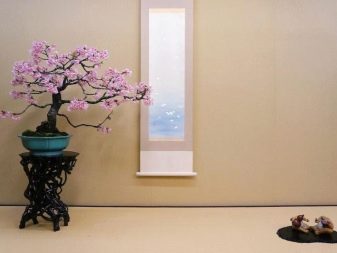
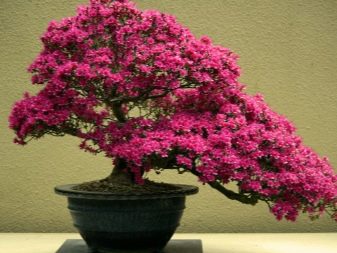
Miniature sakura easily takes root in the house, it tolerates gas pollution well. A flowering tree pleases its owner with bright pink flowers 1 cm in diameter. A variety with purple, green or red flowers can be grown if desired. Anyone can germinate sakura bonsai from seeds.
The main thing in this business is to be patient and follow all the rules for planting and caring for a plant.
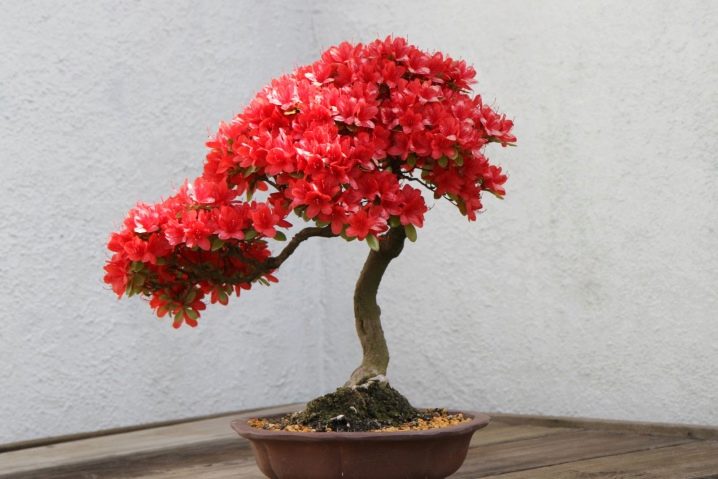
Landing
It is recommended to plant seeds in spring or late summer. Before planting a flower, it is important to pay special attention to the preparation stage. Think in advance in what container the plant will be grown. For planting, you will need flat earthenware up to 10 cm high with drainage holes. A deep pot will not work, otherwise the root system will grow. In one bowl, it is allowed to plant several seedlings at a distance of at least 10 cm from each other; planting seeds requires a different technology.
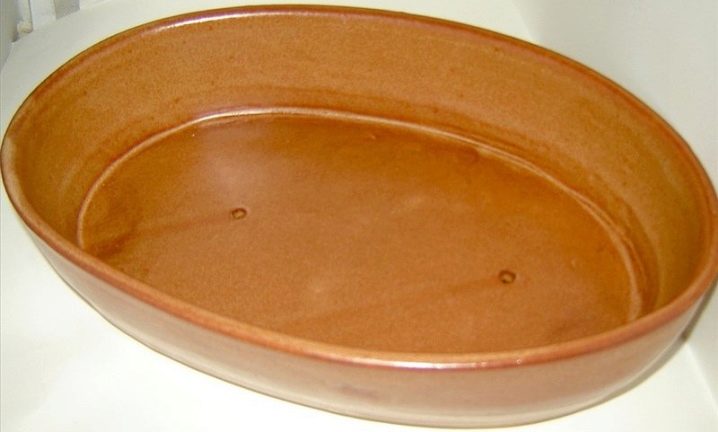
First of all, prepare the seeds. The planting material must be fresh. Place the seeds in the refrigerator for several months, the temperature should be set to 4-5 degrees Celsius. When it's time to plant, keep them in warm water throughout the day, the water temperature is up to +35 degrees. You can add a little manganese.

Feel free to throw out the floating grains, they will definitely not sprout.
The next step is soil preparation. Combine humus and sand in proportions of 2: 1, respectively. Some growers add peat and humus garden soil to the mixture, moss will also be useful. Hold the finished composition over steam for a few minutes, dry and sift.
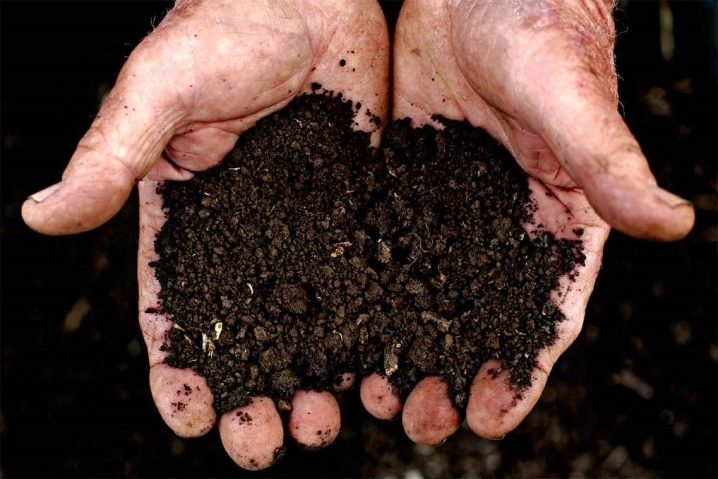
Then follow these steps.
- Fill the prepared bowl with the earthen mixture 3/4 of the volume.
- Make grooves. Deepen the seeds by 0.5-2 cm.Place large seeds one at a time, at a distance of at least 5-7 cm from each other, the gap between small specimens should be at least 3 cm.
- Lightly sprinkle the seeds with soil and compact the soil a little.
- Cover the container with white paper and pour over.
- Place the pot under glass or cellophane wrap and leave in a warm place at a temperature of 20-25 degrees Celsius so that direct ultraviolet rays do not fall on the container.
- As soon as the first shoots hatch, the glass can be removed.
- When the sprouts are strong, they can be transplanted.
- The first crown formation is possible two years after planting.
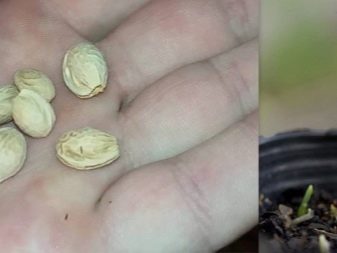
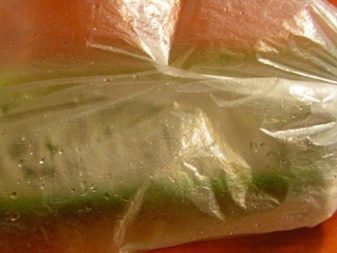
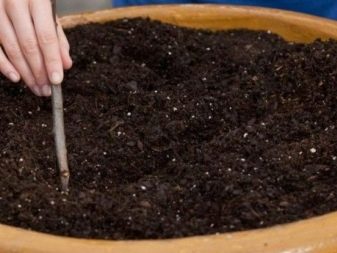
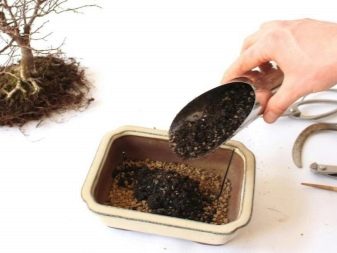
Care
Sakura bonsai is a rather finicky plant.For example, the culture has very serious requirements for watering. It is especially necessary to follow the watering rules when young shoots appear. In summer, bonsai needs half a glass of water every day; in winter, it is enough to moisten the soil as it dries. Good illumination will ensure the full development of the cherry blossoms. It is necessary to place the flower pot on the most lighted area, which is protected from drafts. Ventilate periodically.

To prevent the tree from growing in height, every 2-3 years the sakura roots are shortened, after which the plant is transplanted into a new container. For this, it is recommended to use special bonsai trees.
Remember to maintain your soil's nitrogen and potassium levels. These substances are required to be added monthly, in the summer it is possible and more often. If the age of the plant has exceeded 12 years, then it is necessary to feed it every month at any time of the year. In the spring, mixtures with a ratio of N-P-K 12: 6: 6 are suitable. In the summer, it is recommended to use nitroammophos (10: 10: 10). In the winter months, the ratio of 3: 10: 10 should be observed. When the period of bud formation or flowering begins, it is better to fertilize the flower with a composition with a higher potassium content (6: 6: 12).
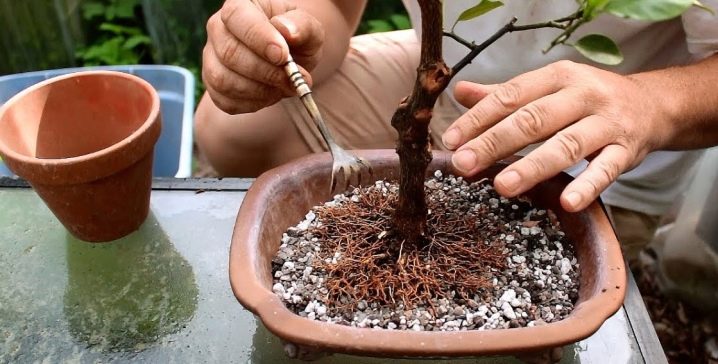
Particularly noteworthy are the rules for wintering a plant. Use the following tips.
- Before freezing, mulch the lower branches and the hole, remove the container with the plant away from the light in a cool place. A garage or shed is suitable for wintering. Beware of drafts.
- Don't overdo it with watering. Moisten the soil as it dries.
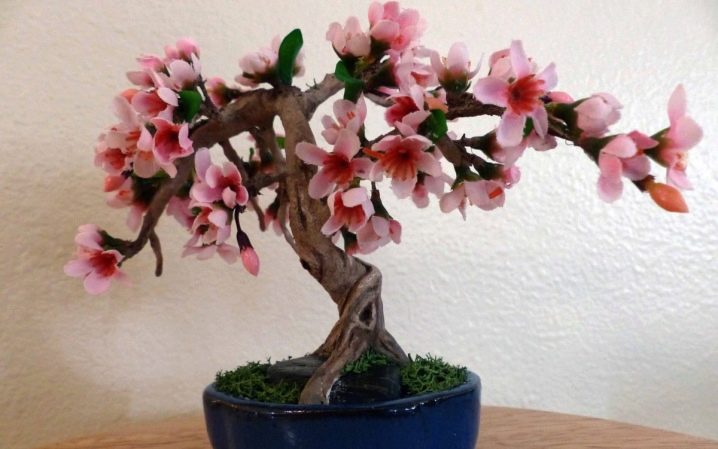
If the rules for caring for this delicate plant at home are not followed, then the culture becomes weak before the attack of diseases and pests. The most common ailment for sakura bonsai is powdery mildew, it can appear if the flower is in a dark place for a long time, as well as in case of waterlogging of the soil.
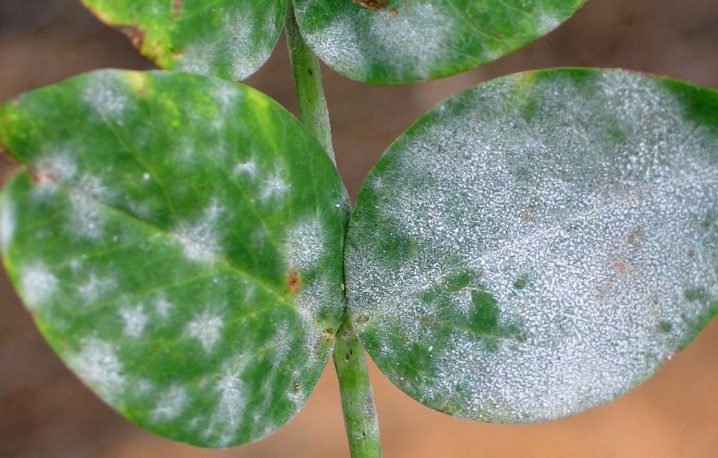
In addition, leaf rolling, which is caused by fungi, is common. Fungal lesions also usually occur if the plant is flooded. Cope with the disease will allow timely measures to eliminate the affected leaves and spraying with fungicides. Of insects, caterpillars, wood lice, bark beetles, and aphids love to feast on decorative sakura. Insecticides will help save the plant from pests.
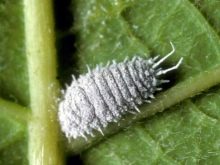

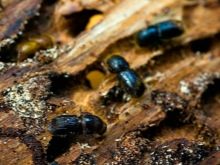
Crown formation
The most important component of a beautiful and neat sakura bonsai is its crown. This stage should be approached with all responsibility. Already during the period of the appearance of the first shoots, one should attend to this issue, so that in the future the tree will please the owner with an aesthetic appearance.
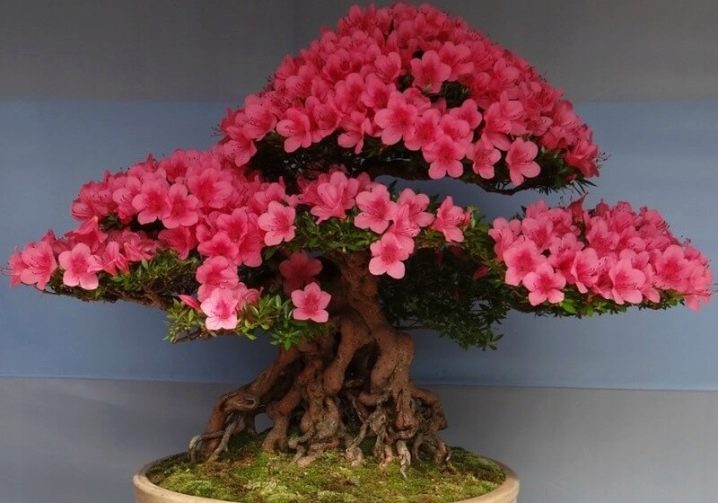
The trunk can be formed using a wire or a stretch. Before installing the wire, it is recommended to try to mount it on other plants, not as fragile as Japanese cherry - to adapt. Take a copper-plated aluminum wire and secure the stem from the branches to the top.
It is easiest to get to the branches in winter or early spring, therefore, it is better to start forming the crown at this time. Three months after the wire has been installed, it can be removed using wire cutters. It is undesirable to untwist the part, this can injure the branches. Depending on the wishes of the grower, the stem can be made straight or curved.
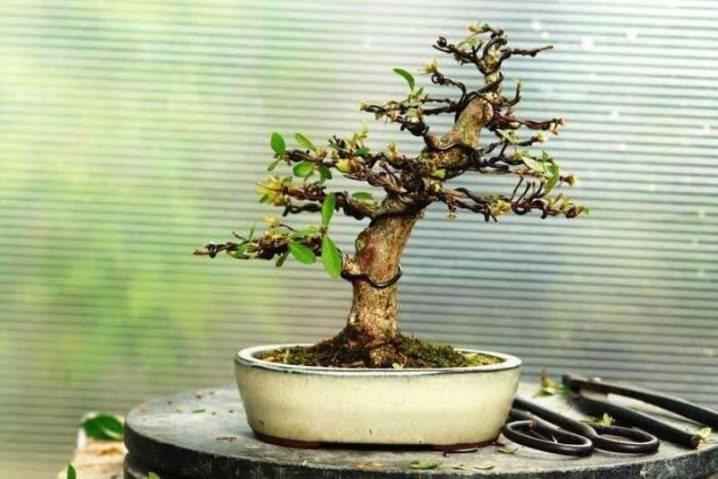
When the tree has faded, cuts are made on the side of the sprouts. This action is intended to change the direction of growth of the shoots, as well as to restrain the growth of the trunk. The tree becomes weak after horizontal cuts, as it loses sap, so its development slows down. Do not forget about sanitary pruning, during which dry branches that thicken the crown are removed. If after pruning there are full cut off shoots, they can be used for cuttings. Treat the cuts with garden pitch.
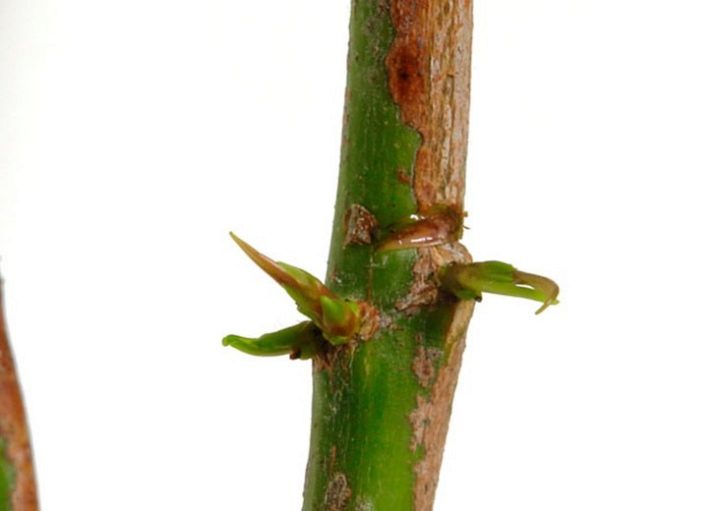
The roots also need annual pruning.
When a florist is engaged in the formation of a crown, it is important to consider that each branch should be shaped and pointed in the direction, otherwise the branches will get confused. As soon as the growth of the specimen reaches 30 cm, the stem is shortened, which ensures abundant growth of the crown. All trimming manipulations are performed with scissors or pruning shears, which must certainly be sterilized. Simple rubbing of instruments with alcohol is allowed. No pruning is done during flowering.
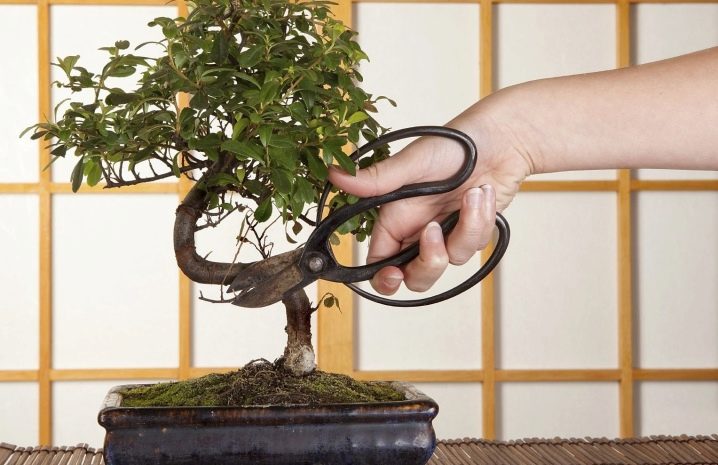
Reproduction
There are three ways to propagate a culture.
- Seeds. This method is described earlier in the article.
- Cuttings. For this, young shoots 5-10 cm long are suitable. It is important when planting all cuttings to be placed vertically in the soil.
- Air layering. This requires a specimen with branches with a maximum diameter of 3 cm. The branch is separated from the trunk using a special technology. 2-3 months before this, roots germinate on it. This is the least common method, and only experienced florists own it.
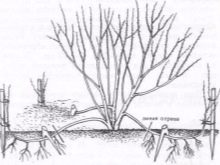
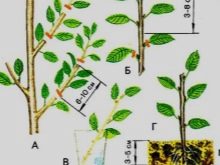

For information on how to germinate saukra grains, see the video below.































The comment was sent successfully.